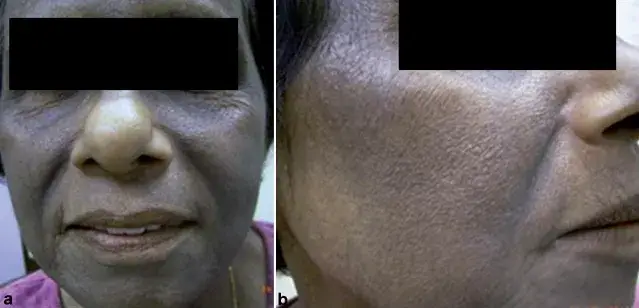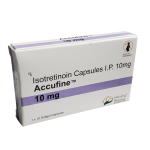Pigmented contact dermatitis (PCD) is a skin condition that causes dark spots to appear after contact with certain allergens. These allergens are often found in everyday items such as cosmetics, fragrances, dyes, pollen, and even industrial pollutants. PCD is especially common among individuals with darker skin tones and can significantly impact their quality of life.
PCD occurs when your skin reacts to something it touches, causing dark patches instead of a rash or redness. These patches are usually flat and can range in color from brown to grayish-brown. They often appear on the skin that has been in contact with the allergen.
What Causes Pigmented Contact Dermatitis?
The primary cause of PCD is an allergic reaction to various substances. When these allergens contact your skin, they trigger a reaction that leads to hyperpigmentation, or darkening of the skin. This can happen with direct contact or through airborne allergens.
For example, textiles can contain chemicals that cause PCD. Substances like pesticides used in fabric production, certain dyes, and preservatives can all be culprits. Cosmetics are another common cause, with some pigments and bactericidal agents in makeup and skincare products leading to PCD. Fragrances in perfumes, lotions, and other scented products can also trigger this condition.
A Unique Trigger of Pigmented Contact Dermatitis
In Japan, some women with Sjögren syndrome, an autoimmune disorder, developed PCD due to a unique trigger. Researchers found that these women had anti-SSA (Ro) antibodies, and the hyperpigmented lesions appeared on sun-exposed areas of their skin. The hypothesis is that UV radiation causes certain skin cells to express the SSA antigen, which then becomes a target for these antibodies, leading to dermatitis and pigmentation.
How to Diagnose Pigmented Contact Dermatitis
Diagnosing PCD involves a careful evaluation of symptoms, patient history, and sometimes skin tests. The dark spots caused by PCD can vary in color and appearance. They might be slightly scaly and have a net-like pattern in the middle. Before these dark spots appear, the skin may be red, swollen, and itchy, indicating an allergic reaction.
The location of the dark spots can also provide clues about the allergen causing the reaction. For instance, dark patches on your face might suggest a reaction to a cosmetic product, while darkened underarm areas could be linked to textile allergens. Sun-exposed areas with dark spots might indicate a photosensitizer, a substance that makes the skin more sensitive to light.
A skin biopsy, where a small sample of the skin is examined under a microscope, can confirm the diagnosis. This test can reveal inflammatory cells, pigment leakage, and other changes associated with PCD.
Treatment Options for Pigmented Contact Dermatitis
There is no one-size-fits-all treatment for PCD, and finding the right approach might take some time. However, several strategies can help manage the condition effectively.
First and foremost, identifying and avoiding the allergens that cause PCD is crucial. This step alone can significantly improve symptoms. Consistent sun protection is also important, as UV exposure can worsen pigmentation.
Topical treatments can help lighten hyperpigmented areas and reduce inflammation. Options include hydroquinone, which lightens dark spots, topical corticosteroids to reduce inflammation, retinoids to promote skin turnover, and vitamin C, a potent antioxidant that can lighten pigmentation. Azelaic acid, which has both anti-inflammatory and pigment-reducing properties, can also be useful.
Chemical peels using agents like trichloroacetic acid and glycolic acid can exfoliate and lighten pigmented areas. Light-based therapies, such as intense pulsed light (IPL) and advanced laser treatments like Q-Switched Nd lasers, target pigmented areas and improve skin tone.
Cosmetic camouflage, using makeup to cover dark spots, can enhance cosmetic appearance and improve self-esteem, especially if the pigmentation is distressing.
New and Emerging Treatments
Recent research suggests that oral tranexamic acid, a medication commonly used to reduce bleeding, can also reduce pigmentation. Additionally, combinations of treatments, such as hydroquinone with laser therapy and oral tranexamic acid, have shown promising results in improving PCD symptoms.
Takeaway Message
Pigmented contact dermatitis is a type of eczema that causes dark spots on the skin after contact with allergens. While managing PCD can be challenging, identifying and avoiding allergens, using sun protection, and employing various topical and light-based treatments can help. The prognosis is generally positive, and with the right approach, you can manage your symptoms effectively.
If you suspect you have PCD, consulting with a dermatologist can provide you with a tailored treatment plan to address your specific needs and improve your skin’s appearance.








